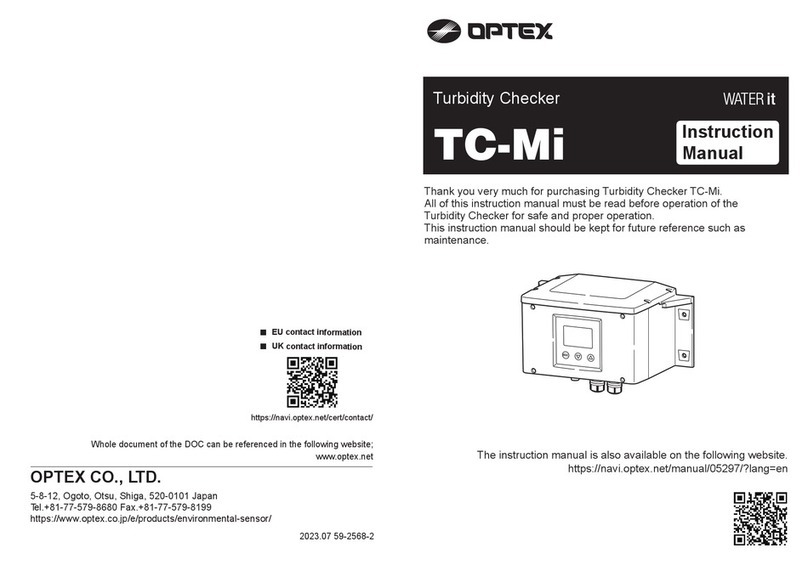
3
Table of Contents
1 For Safe Use........................................................................... 5
2 Component Name.................................................................. 7
3 Installation.............................................................................. 8
Sensor installation................................................................. 8
Extension of sensor cable................................................... 11
4 Wiring ................................................................................... 12
5 Sensor Setting ..................................................................... 13
Display item (unit selection)................................................ 13
Response time.................................................................... 14
6 4-20 mA Setting ................................................................... 15
Output item selection .......................................................... 15
Upper/lower limit of signal output range.............................. 16
7 Relay Setting........................................................................ 17
Alarm output setting............................................................ 17
Maintenance output setting................................................. 18
Self Checking output setting ............................................... 18
8 Calibration............................................................................ 19
Zero calibration ................................................................... 19
9 Adjustment........................................................................... 22
Offset adjustment................................................................ 22
Span adjustment................................................................. 23
2-point adjustment .............................................................. 25
Adjustment initialization ...................................................... 27
10 Maintenance Setting............................................................ 28
Measurement value hold..................................................... 28
Hold timer............................................................................ 28
Maintenance timer .............................................................. 29




























